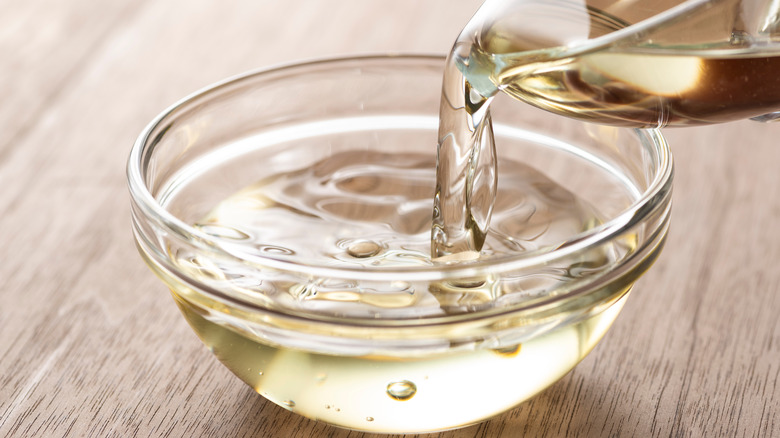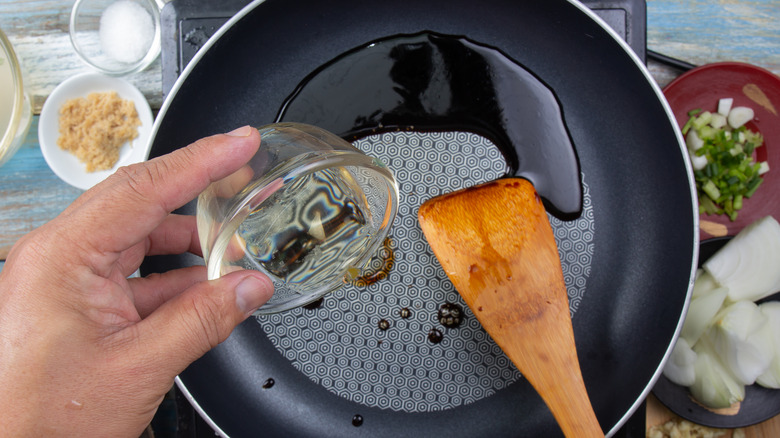The 2 Ingredients To Substitute For Japanese Mirin
You're yearning for teriyaki chicken tonight, and as you gather the ingredients to whip up this delicious dish, you find that mirin, a sweet rice wine, is fundamental to the recipe. Mirin holds a special place in Japanese cuisine, balancing alcohol content — lower than sake — with a high sugar content, sitting at about 40%.
But to your dismay, the mirin bottle is nearly empty. Fortunately, there's no need to panic. With a little bit of sake and a sweetening agent such as sugar or honey, you can emulate the unique flavors of mirin and keep your teriyaki chicken night on track.
Here's a handy formula to seamlessly substitute mirin using sake and sugar: Considering mirin is almost half sugar, blend approximately two parts sake with one part sugar. Though it won't be a perfect emulation of mirin's formula, combining two tablespoons of sake with one tablespoon of sugar will still do the trick. If honey is your sweetener of choice, that's fine too — it integrates effortlessly due to its liquid state, creating a smooth blend with the sake.
Mirin's multifaceted culinary uses
While sake paired with a sweetener can effectively mimic mirin's unique properties in culinary applications, it's pivotal to note that sake alone is not a direct substitute. Mirin and sake have divergent flavor profiles; mirin's characteristic sweetness contrasts with the subtle, nuanced, and bold flavors of sake, which also carry a higher alcohol content. The relative lack of sweetness in sake necessitates the addition of an appropriate sweetener to accurately replicate the sweet essence of mirin.
Mirin has a profound historical significance in Japanese cuisine, originating during the Edo period. Initially conceived as a sweet variant of sake for consumption, mirin has evolved into an indispensable culinary component showcasing its versatile essence. Today, we find mirin in various Japanese, broader Asian, and Western dishes, bringing a balancing sweetness, syrupiness, and a lustrous sheen to the cuisines it touches. It is a crucial component in teriyaki sauce, glazes, marinades, dressings, and simmered dishes, adding depth, enhancing flavors, and perfecting the savory-sweet equilibrium in recipes like teriyaki chicken, nimono, and sukiyaki. Of course, if you also want to sip some mirin for dessert, we won't judge — just do so responsibly. And if you don't have mirin at home, you know you can easily replicate it with some sake and sugar in a pinch.

